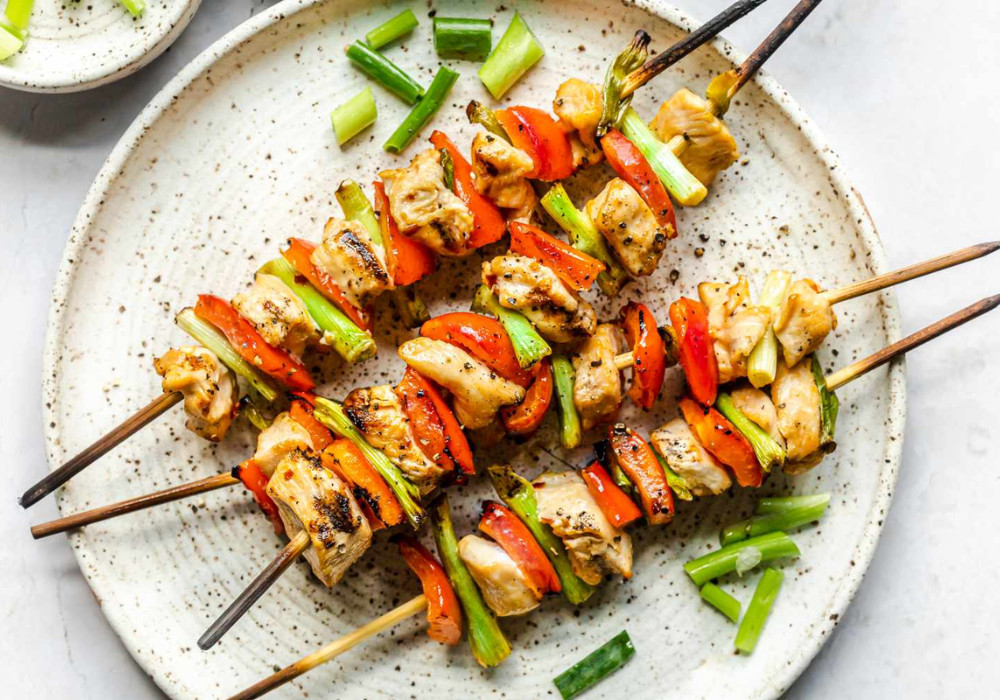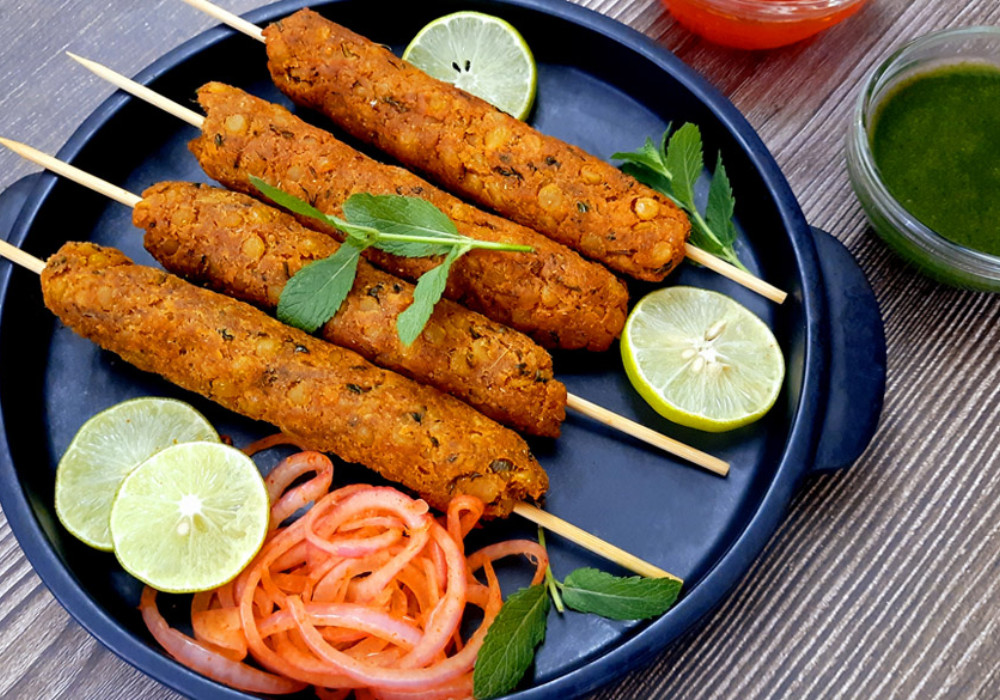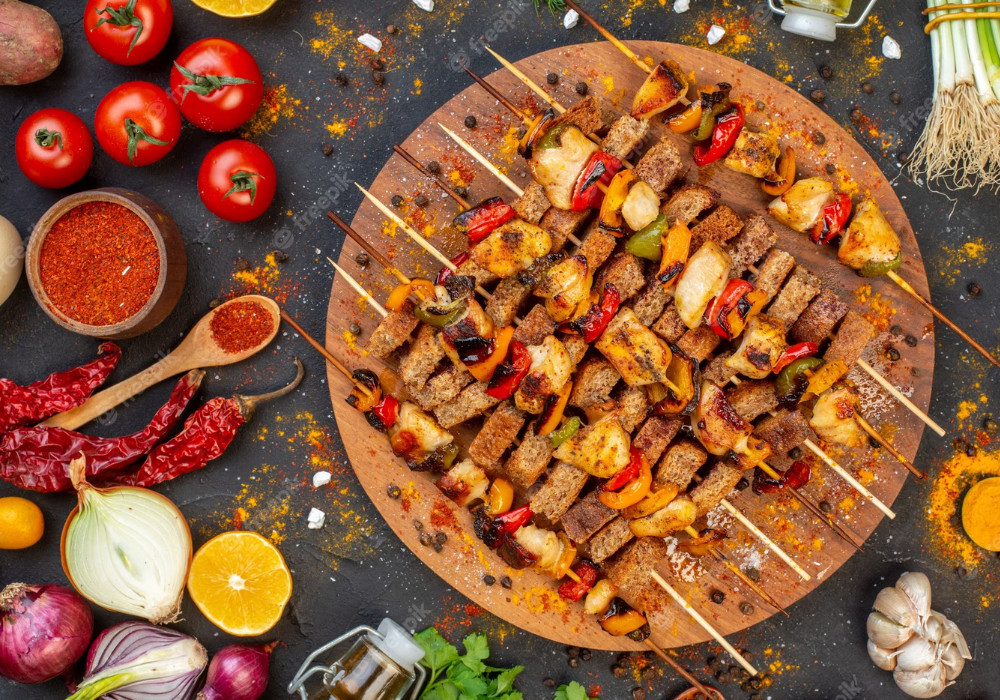Kebab is a popular and diverse culinary delight enjoyed in various cultures around the world. Here’s some comprehensive information about kebabs:
Kebab refers to a range of dishes made from grilled or roasted meat, typically skewered or cooked on a grill. The term “kebab” originated from the Persian word “kabāb,” meaning to roast or grill.
Types of Kebabs:
Kebabs come in many forms, with different regions and countries having their own variations. Some well-known types include:
- Shish Kebab: Skewered and grilled cubes of marinated meat, often with vegetables.
- Doner Kebab: Succulent layers of seasoned meat, usually lamb or chicken, cooked on a vertical rotisserie and sliced thinly.
- Seekh Kebab: Spiced ground meat, often made with lamb or beef, shaped onto skewers and grilled.
- Kofta Kebab: Ground meat mixed with herbs, spices, and sometimes vegetables, shaped into meatballs or logs, and grilled.
- Adana Kebab: Spicy minced meat kebab originating from Turkey, typically made with lamb.

Also Read: Exploring Popular Vegetarian Cuisines from Different Parts of the World
Ingredients:
Kebabs are commonly made with various meats like lamb, beef, chicken, or fish. Vegetarian options use ingredients such as paneer (cheese), tofu, or a medley of vegetables. Kebabs are seasoned with a variety of herbs, spices, and marinades, adding depth of flavor.
Cultural Significance:
Kebabs hold cultural significance in many countries, showcasing local culinary traditions and techniques. They are also associated with festive occasions, family gatherings, and street food culture.
World Popularity:
Kebabs have gained immense popularity worldwide due to their delicious taste, versatility, and accessibility. They can be found in various international cuisines, including Turkish, Middle Eastern, Indian, Greek, Afghan, and many more.
Serving Styles around the World:
Kebabs are commonly enjoyed wrapped in flatbreads or pita. Further, it is accompanied by sauces, yogurt, and fresh herbs. They can also be served with rice, salad, or as a part of platters with an assortment of sides.

Variations around the World:
Beyond meat-based kebabs, there are also unique variations like fruit kebabs, dessert kebabs (with ingredients like marshmallows and fruits), and regional specialties specific to certain cultures.
Cultural Exchange:
Kebabs serve as a bridge for cultural exchange. It also brings people together through a shared love for flavorful and grilled cuisine. They also represent the diversity of culinary traditions worldwide.
Whether it’s savoring the aromatic spices of a seekh kebab or relishing the juicy layers of a doner kebab, this beloved dish continues to delight food enthusiasts across the globe, celebrating the art of grilling and the joy of communal dining.
Also Read: Exploring Exquisite Flavors and Art of Preparation of Pani Puri











